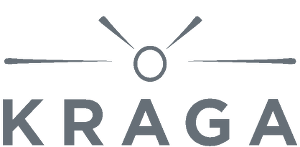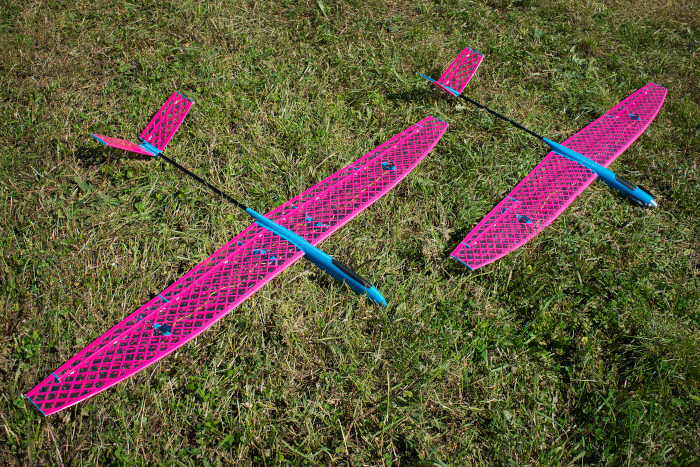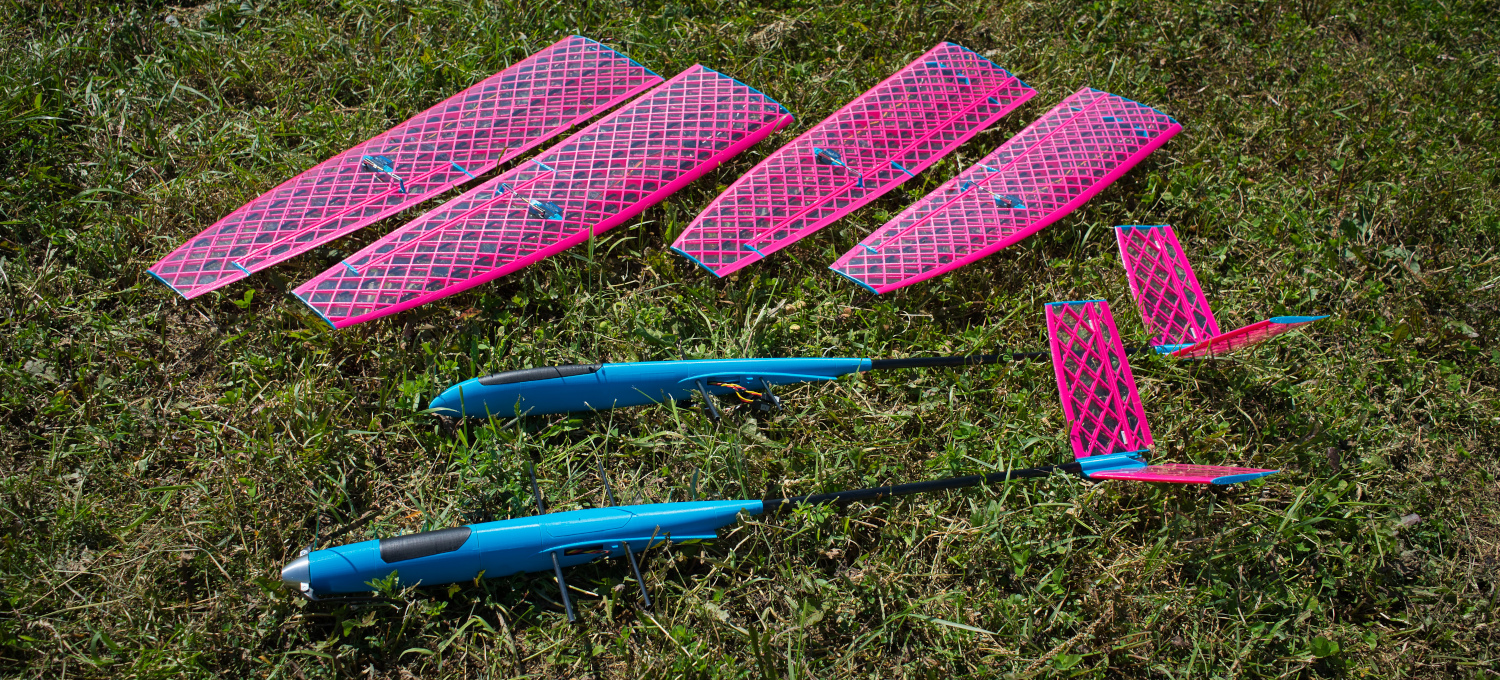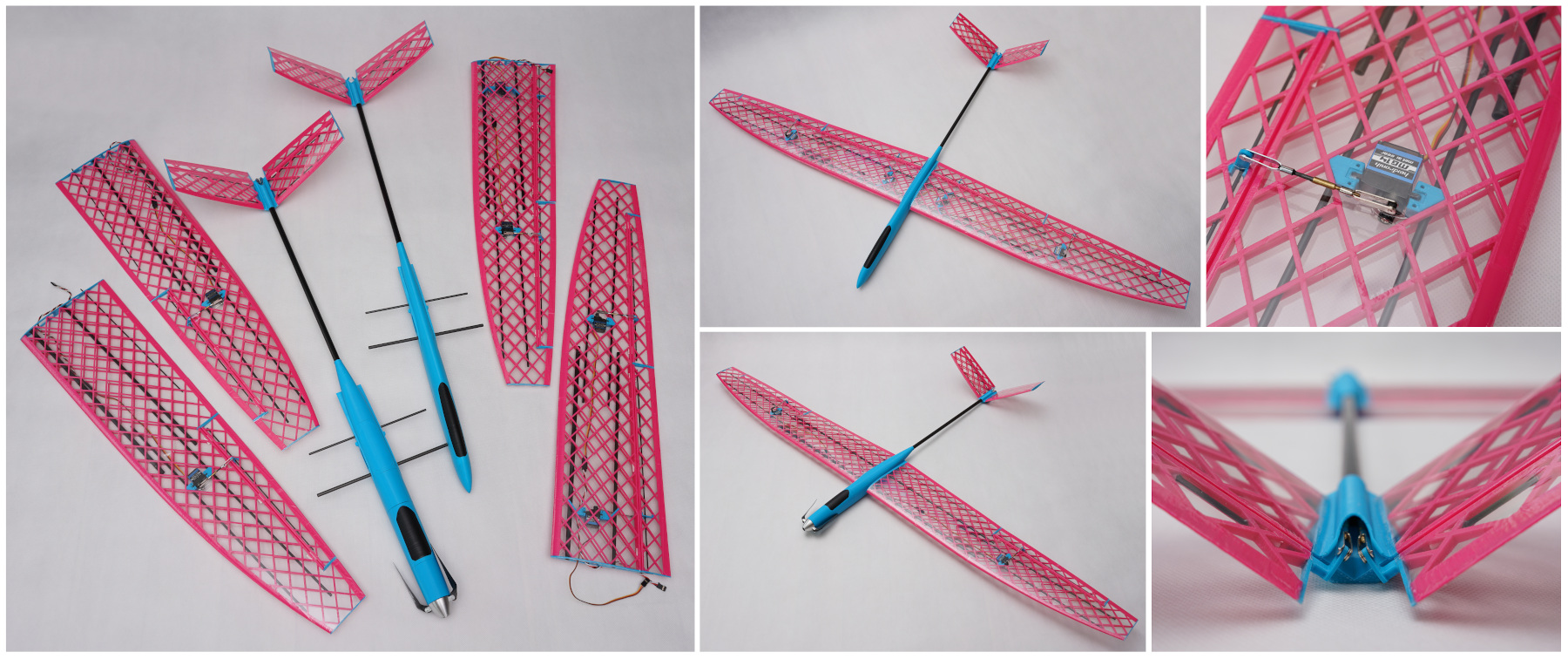

Kodo II is second generation of a multipurpose glider that does it all.
It can circle in thermals but also penetrate the wind on the slope. It can be flown by a beginner but also by skilled pilot. It can be built with motor but also as pure glider. It can be built with flaps for short landing on small windy slopes. It is big enough to be visible in the air and small enough to transport.
Here are some of the things, that were improved:
- updated wing structure
- similar in weight yet much stiffer
- slightly bigger wingspan
- improved wing airfoil
- it has optional flaps
- easily removable wing servos
- endcaps finally everywhere
- more space in fuselage
- requires less added ballast to get correct CG
- front canopy moved for better motor access
- bigger back canopy for better servo access
- more carbon in fuselage for better stiffness
- added wing attachment mechanism
- more room for v-tail linkage thanks to bigger boom diameter
- v-tail linkage changed from push to pull on up elevator
- improved v-tail airfoil
- dedicated glider fuselage with tow hook option
Overall Kodo II is more mature now, it feels confident and more responsive in the air.
Check out Kodo thread on RCGroups


| part | dimensions | count |
|---|---|---|
| carbon tube | ⌀ 2x1 mm ↔ 1 m | 5 |
| carbon tube | ⌀ 4x3 mm ↔ 1 m | 3 |
| carbon tube | ⌀ 6x4 mm ↔ 1 m | 2 |
| carbon tube | ⌀ 8x6 mm ↔ 1 m | 1 |
| carbon tube | ⌀ 12x10 mm (or 12x11) ↔ 500 mm | 1 |
| covering film | ↔ 2 m | 1 |
| pinned hinge | ↕ ↔ 16x28 mm or smaller | 10 * |
| folding propeller | up to ↔ 10 inch | 1 |
| spinner | ⌀ 40 mm | 1 |
| screw | M2 ↔ 8mm | 10 |
| other common accessories (clevises, servo extension cables, electronics ...) |
This is by no means the best way possible how to setup your plane.
This is just list of affordable parts that I believe could be good starting point for beginners.
Turnigy Aerodrive SK3 - 2836-1040kv Brushless Outrunner
With this motor Kodo will be no rocket. But it is enough for a little bit of fun. On top of that,
it will fit nicely into the fuselage and you should have no problem setting the CG.
Suitable propeller sizes: 9x6, 9x7, 10x6.
HobbyKing 40A (2~6S) Brushless Speed Controller
Optionally you can use programming card but It should work fine out of the box.
Turnigy nano-tech 1000mah 3S 25~50C Lipo Pack
or Turnigy 1250mAh 3S 30C Lipo Pack (Long)
You can choose other battery but keep your size and weight similar to the examples above (80g-100g). Using these, ESC and battery are installed
as much as possible in the front of the fuselage next to each other (parallel config). For heavier batteries you need to put ESC into the front
of the fuselage area and battery behind it closer to the servos (series config).
When it comes to glider fuselage Turnigy nano-tech 950mah 2S 25~50C Lipo Pack will just about fit into the front of the fuselage. You will need roughly 50g of additional ballast. This is again one of many options if you want to fly more using motor. For heavier batteries you need to put ESC into the front of the fuselage area and battery behind it (series config).
This depends on your transmitter. Only requirement is to have 7 channels if you want to have flaps on your wing, otherwise 5 channels is enough. (4 if you are going for pure glider - no motor)
Turnigy™ TGY-9018MG MG Servo
It is a digital servo with metal gears for reasonable price. You can use 6 or 4 of these, depending if you want to have flaps on your wing (2 for the ailerons, 2 for the flaps, 2 in the fuselage).
More details about required servo dimensions can be found in build guide pdf.
